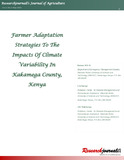| dc.contributor.author | Barasa, M.O. B. | |
| dc.contributor.author | Oteng’i, S. B. | |
| dc.contributor.author | Wakhungu, J.W. | |
| dc.date.accessioned | 2023-06-22T11:33:10Z | |
| dc.date.available | 2023-06-22T11:33:10Z | |
| dc.date.issued | 2015-05-05 | |
| dc.identifier.uri | https://d1wqtxts1xzle7.cloudfront.net/52072526/1670.pdf_reaserchjounali-libre.pdf?1488975578=&response-content-disposition=inline%3B+filename%3D1670_pdf_reaserchjounali_pdf.pdf&Expires=1687182042&Signature=ECU6rb9Q2b-3-Kn8yOwY7P6oLKNnpC5JaxH9in4Eglu0VUl4ZrpnZ2qR2YaWu0R0Mr2m6zjyzq8g2fmEdOsdPFZWjZ8FDygOYhXZFz6a36~1~tsgg1RO5xC~dsgiIfdtNbu7EXbaQvCP6J6NNsfqyOsvoIdakx9Zq9JxPh8hJ5CmRmu11rQgCiQnXZch2R14FrNy6H19iZgIHmd08YKZOAt1~d7CoPQD4O1welHHCr-NX8Bcow6Zz2qhMywMhMpMZmDTuwvkTNgvvGrkD4tpq7jrwLcd9L~-IWTYm6F46sJGXDrZ1jhTSw9pIx0l~hRaHcJKdKBL8kIK89pK1TVM4Q__&Key-Pair-Id=APKAJLOHF5GGSLRBV4ZA | |
| dc.identifier.uri | http://ir-library.mmust.ac.ke:8080/xmlui/handle/123456789/2235 | |
| dc.description.abstract | Climate variability entails short to medium term fluctuations of climatic variables around mean state on
climate scales. Impacts of climate variability include amongst others: increase in extreme weather conditions;
land degradation, changes in rainfall patterns; diminishing natural resource productivity; and in some areas,
irreversible loss of biodiversity. Agricultural sector is sensitive to climatic conditions and hence vulnerable to
climate fluctuations. The severity of the aforementioned impacts depends on the extent of adaptation as this
has the potential to substantially reduce many of the adverse impacts. This study assessed farmer adaptation
strategies to climate variability in Kakamega county, Kenya. Multistage sampling strategy was used to obtain
the geographical areas from where four hundred (400) farmers were randomly sampled. Semi structured
questionnaires, Focus Group Discussions (FGDs), Key Informants interviews (KIIs) and observation check
lists were used to collect data. Data were analyzed using SPSS statistical data package for social sciences
version 17. The study established that farmers were adapting strategies to suit the changing climatic
conditions and also taking advantage of presenting opportunities. The highest ranked strategies of adaptation
embraced in livestock farming were: management of infections (57.9%); and adjustments in the
feeding/fodder/pastures programmes (15.5%). Diversification of herds (4.5%) and value addition ranked as
the least adaptive measures embraced (3.2%). Further, farmers had reduced the land under pasture or grazing
in order to grow crops with the consequence of reduction in size of their herds. In crop production, the most
highly ranked adaptive measures were: management of soil resource and other farm inputs (52.9%);
intercropping (15.8%); and diversification (7.6%) which appeared in the third position. Intercropping helped
to maximize on the utilization of small pieces of land as several crop were grown on the same piece of land at
the same time. Diversification into growing drought tolerant varieties of crops such as sorghum, cassava,
millet and cassava that withstood extended dry spells. Management of infections along with water resource
ranked as the least adaptive measures embraced. Further, most farmers expressed that they had adopted
several cropping cycles in the same growing season to maximize on the presenting favourable conditions such
as unexpected increase in the rains. The study observed that a proportion of farmers still stuck to their old
farming practices and recommended the need to enhance farmers’ awareness which would enable them make
informed adaptation decisions. | en_US |
| dc.language.iso | en | en_US |
| dc.publisher | Researchjournali’s Journal of Agriculture | en_US |
| dc.subject | Farmer, Adaptation, Strategies, Impacts, Climate Variability, County, | en_US |
| dc.title | Farmer Adaptation Strategies To The Impacts Of Climate Variability In Kakamega County, Kenya | en_US |
| dc.type | Article | en_US |

